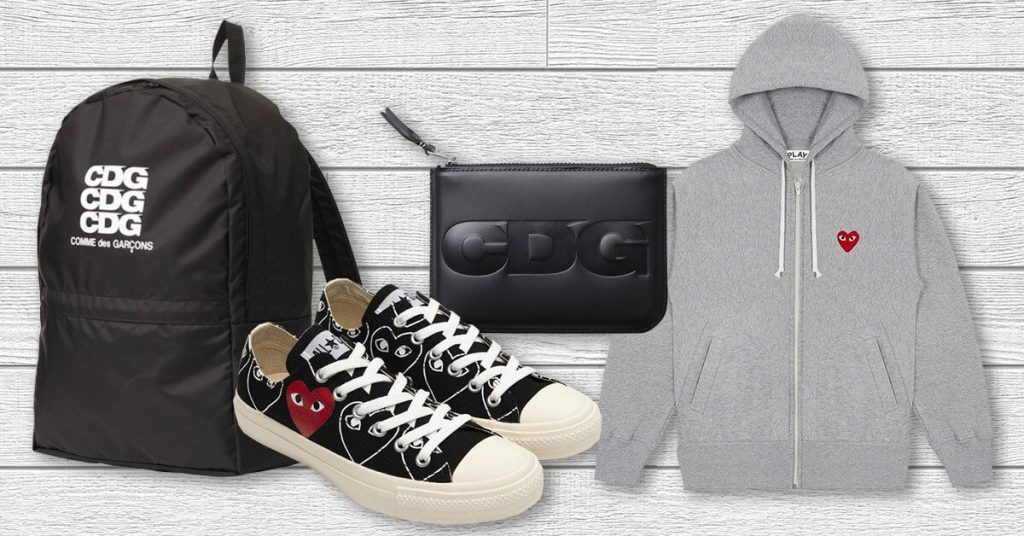
Launched by the self-taught designer Rei Kawakubo in Tokyo, Comme des Garçons began with a mission to revolt against the fashion status quo. While the polished, structured designs of traditional luxury fashion cast a long shadow on the 1970s and the 1980s, with its successful charcoal and monochrome collections, the brand’s early collections of deconstructed garments, asymmetry and all-black, stood apart.
Comme des Garçons premiered in Paris in 1981, and shook audiences with its tattered coverings, odd shapes, and anti-fashion sentiments. Although critics were (and still are) divided on the brand, it quickly developed a cult following around it and became known as a disruptor within the luxury space.
The Link Between Luxury and Streetwear
When Comme des Garçons first started, it worked with scant high fashion but later dabbled in streetwear. The Hype House–y ability to blur the line between luxury and everyday wear came clear in the 1990s and early 2000s, with the introduction of diffusion lines for those not quite ready to go full ‘Gram.
Comme des Garçons PLAY, launched in 2002, has been one of the brand’s most commercially successful lines. It is a more accessible and casual side of Comme des Garçons whose heart logo designed by Polish artist Filip Pagowski has become iconic in its own right, and so a favorite of the streetwear crowd.
One of the brand’s biggest forays into streetwear crossover came in the early 2000s, when it collaborated with Nike and later with Supreme, Vans, and Converse. These collaborations brought Comme des Garçons’ high-concept sensibilities to a younger, streetwear-savvy crowd.
The Power of Collaborations
Comme des Garçons has been a collaboration expert, teaming with brands across the industry. Its most impactful partnerships include:
Nike — Taking iconic silhouettes on sneaker DNA and rethinking them through experimental designs.
Supreme — Exclusive releases fusing high fashion with streetwear culture.
Louis Vuitton For those able to afford their own mega tent, this recent collaboration between two luxury powerhouses cements its place in both high fashion and street wear circles.
H&M — The original high-low collaboration, bringing Comme des Garçons to a mass audience.
These partnerships have cemented Comme des Garçons’ power in both the high-end and streetwear markets, creating one of the rare brands that can move effortlessly in both spheres.
The Cultural Impact
As its name suggests, Comme des Garçons is more than just a fashion brand — its hand has reached into art and music and design. Its conceptual approach has influenced innumerable designers, and its appearance in pop culture — worn by A-list stars including Kanye West, Rihanna, and A$AP Rocky — has cemented its legitimacy in the streetwear canon.
And Rei Kawakubo’s influence has been acknowledged worldwide, with the Metropolitan Museum of Art devoting its 2017 Costume Institute exhibition to her work, a rare distinction for a living designer.
The Successor to Comme des Garçons
Today, Comme des Garçons, under the direction of Rei Kawakubo, still challenges boundaries. It keeps up with the times by always evolving, taking a cue from streetwear but still staying true to its avant-garde roots. Comme des Garçons has become a streetwear powerhouse and a luxury fashion icon, whether through its trailblazing runway collections, star-studded collaborations, or mere omnipresence in the world of street style.